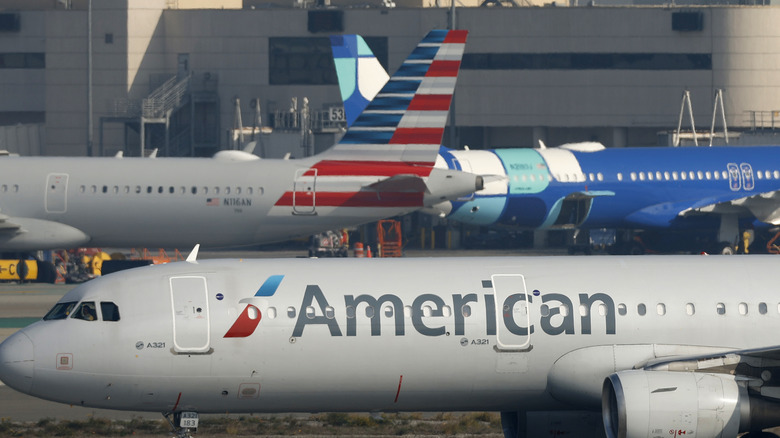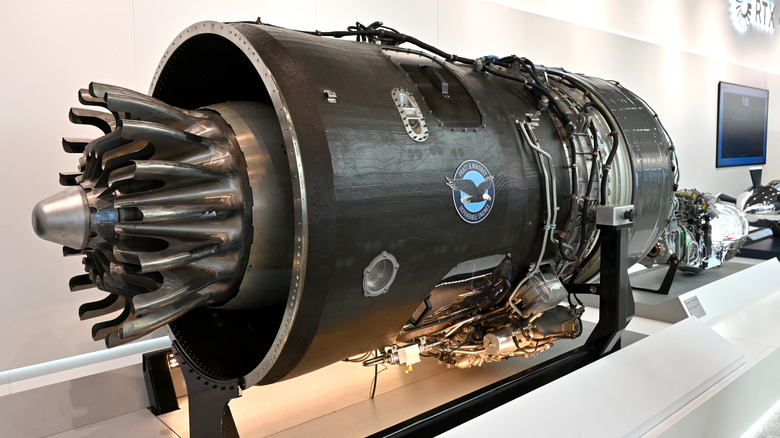How Much Damage Can A Bird Strike Do To An Airplane Engine?
The recent tragic accident involving a Jeju Air Boeing 737-800 in South Korea has been strongly linked to the aftermath of a bird strike. Although the full details of the accident are still to be established, investigators have found feathers in both engines. While speculating that this is the only cause of the accident may be inaccurate, it is undoubtedly a factor.
Famously, the "miracle on the Hudson River" incident was also a result of birds being ingested into both engines. These are two extreme examples that demonstrate that bird strikes can cause substantial damage to aircraft engines. However, the important point to note is that these aren't typical circumstances. While bird strikes on airplane engines are surprisingly common, especially during takeoffs and landings, they rarely result in accidents. According to the Federal Aviation Administration (FAA), there were 19,700 bird strikes at 780 airports in U.S. airports during 2023.
Understanding what happens to an airplane engine during and after a bird strike reveals why most incidents, though potentially destructive, rarely end in catastrophe.
What happens to an airplane engine after a bird strike?
Jet engines are incredibly powerful, complex pieces of precision engineering, running at the finest of tolerances; bird strikes can push these tolerances to the limits. When a bird is ingested into an engine, the first thing the unfortunate creature will meet is the fan blades, typically rotating between 2200 rpm and 4500 rpm.
Modern engines are designed to withstand certain levels of bird ingestion and must meet FAA standards. However, even then, a collision with larger birds or entire flocks can overwhelm these safety margins. Depending on the bird's size, the impact can result in bent or broken blades, internal engine damage, engine failure, and fires. The fact that instances like the aforementioned Jeju and Hudson River incidents are the exception, rather than the rule, can be attributed to the rigorous testing that jet engines undergo to ensure they meet FAA regulations.
A 2024 case involving a Virgin Australia Boeing 737-800 — one of the most iconic Boeing planes — is more typical of a bird strike. In this case, a bird strike caused the plane's right engine to burst into flames just as the plane took off. The pilots shut down the engine and returned safely to the airport 50 minutes later. Ultimately, any foreign object that is ingested into something that is spinning at several thousand rpm will cause damage. It's a testament to modern engineering that flying remains the safest form of transport.
Preventing and mitigating bird strike damage
The incredible safety record of air travel is not something that happened accidentally. It's been a case of learning from mistakes, decades of advancement in aviation technology, improved safety protocols, and rigorous maintenance standards. However, despite this, bird strikes remain a persistent challenge. Nature doesn't always play by our rules.
It's this element of unpredictability that continues to challenge airports, airlines, and engine manufacturers. To minimize the risks, each stakeholder has a part to play. For instance, Rolls Royce — a name commonly associated with luxury cars — tests its engines' response to bird strikes by firing chicken carcasses into them. Airlines also play their part in reducing the seriousness of bird strike instances. Realizing that hitting birds is an inevitability, they are heavily invested in reducing the number of bird strikes and ensuring that pilots are trained in handling failures caused by birds.
Of course, airports play a major role in defending against bird strikes. Among the methods used are pyrotechnics, eliminating vegetation, radar alerts, and even the trusty old scarecrow. However, the fact remains that planes and birds are destined to share the same airspace and collisions are inevitable. It's a tribute to modern jet engines and skilled pilots that such instances are mostly counted as merely an inconvenience.


